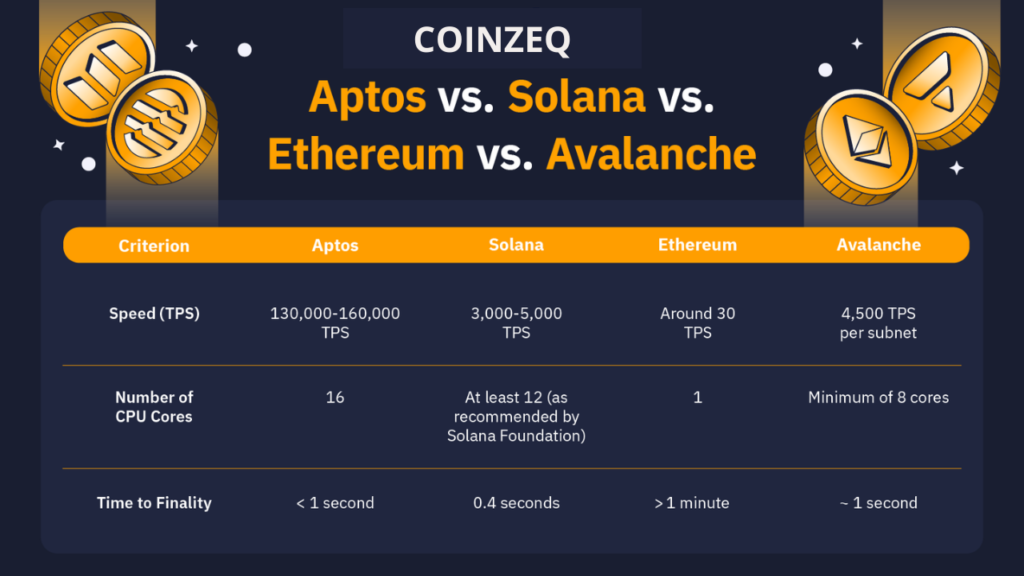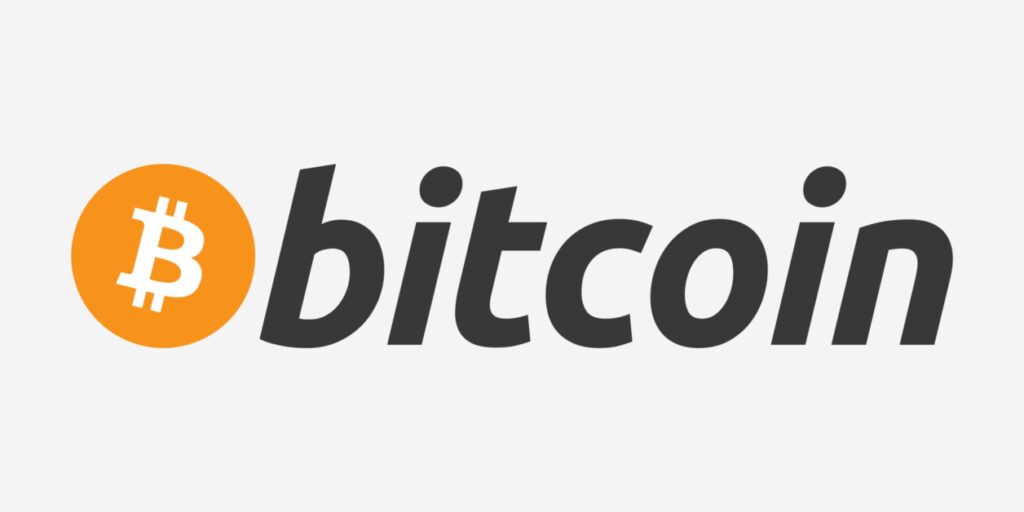If you’re looking for new crypto projects to invest in, Aptos is certainly a promising option that has generated plenty of buzz recently. This venture capital–backed cryptocurrency is still in the planning stage, but its proposed features are already gaining ground among the crypto community. Aptos ultimately plans to increase scalability while offering some unique security and usability options. Here are some essentials to know if you want to be one of the first trendsetters with Aptos.
What Is Aptos?
Aptos is a Layer 1 blockchain that uses the Move programming language. The cryptocurrency promises users increased scalability, reliability, security and usability.
The Aptos genesis occurred on October 12, 2022, with Aptos blockchain’s mainnet “Aptos Autumn” launched on October 17, 2022. The blockchain has raised millions of dollars from investors so far. Aptos is a Layer 1 blockchain built with a Rust-based programming language called Move. Its key features include a parallel execution engine, high-level security features and low transaction costs.
The Aptos blockchain is generating all this hype because of its intriguing past. The blockchain is based on the Diem blockchain initiative (from Meta) that was recently abandoned. Created by Diem developers, the Aptos crypto uses the programming language originally created for Diem. Its focus is on Diem’s original goal of creating a scalable, fast blockchain. In addition, it hopes to offer additional features that will make the crypto more accessible to average users.
Who Is Aptos Labs?
Aptos Labs is the team behind the Aptos project. They currently lead a diverse team of developers, engineers and strategists headed by co-founders Mo Shaikh and Avery Ching.
Shaikh and Ching met when they worked together on the Diem blockchain project at Meta. Shaikh specializes in scaling products, and has experience in the private equity and venture capital markets. Meanwhile, Ching was one of the principal software engineers at Meta and has led many exciting and innovative development projects in the past. When Meta chose to discontinue the Diem project, Shaikh and Ching decided to join together to create Aptos Labs.
Aptos Labs’ motto is “Building a Layer 1 for everyone.” The company is dedicated to creating the safest, most-reliable network possible. Though they’ve been around only a short time, their mission has already gained a lot of support. In two financing rounds, Aptos Labs has managed to raise over $350 million in funding, launched its developer testnet, and successfully handled millions of transactions and thousands of nodes.
How Does the Aptos Blockchain Work?
The Aptos blockchain can theoretically reach 160, 000 transactions per second (TPS) while maintaining security and reliability. A few revolutionary concepts are at work behind Aptos’ impressive performance.
Block-STM Technology
Block-STM technology creates an engine that efficiently handles smart contracts. The Aptos blockchain engine relies on parallel execution to handle multiple transactions at once. This makes things a lot quicker because a single failed transaction won’t halt the whole chain. Instead, transactions can be processed concurrently, and all of them are validated post-execution. To further improve efficiency, a collaborative scheduler works to prioritize certain transactions on the Aptos blockchain and handle essential validations efficiently. Ultimately, up to 160,000 transactions may be processed simultaneously.
Move Programming Language
One of the things that make Aptos crypto so appealing is Move, a custom programming language that was first designed for the Diem blockchain. Move is a type of executable bytecode language. It’s flexible enough to handle the unique needs of Aptos developers, and its global storage is more secure than the average programming language. Move lets users define custom resources that can’t be copied or discarded, making it much more difficult for malicious entities to control the Aptos blockchain.
BFT Consensus Protocol
Instead of using a consensus protocol that has to follow the order of transactions, Aptos decouples the two processes and lets them run parallel to each other. This reduces latency (the time it takes to confirm network transactions) while increasing speed. To ensure accuracy, Aptos has created a Byzantine fault tolerant (BFT) engine that analyzes individual states on-chain and then automatically updates validators as needed.
What Makes Aptos Different?
If you’ve spent a lot of time checking out crypto news, Aptos crypto might sound somewhat familiar. It’s definitely true that a lot of new blockchains claim to be exciting Layer 1s that will solve all scalability problems. While it’s understandable to approach Aptos with some caution, it actually does justify some hype. A very active community, plenty of investors, and access to unique engines and programming languages all help the Aptos blockchain stand out. If it delivers on its promises, it will be very different indeed from existing Layer 1 chains.

Aptos vs. Solana
One of the Aptos blockchain’s main competitors will be Solana, which is currently the hottest high-performance Layer 1 available. So far, both Aptos and Solana have similar levels of speed because they both rely on engines that can run computations in parallel. However, when comparing the Solana and Aptos blockchains, Aptos seems to be more reliable. Solana has been fairly prone to failure, having had notable outages and downgrades.
The Aptos blockchain adds redundancy to its network, rendering it less prone to failure. Each block in Aptos is synced with leader nodes and nearby nodes. In case the leader node fails, one of the other nodes can take over. This results in slightly more computational requirements, so Aptos’ hardware needs are a little larger than Solana’s. Ultimately, Aptos manages more reliability than Solana in exchange for slightly higher hardware requirements.
Aptos vs. Avalanche
Early reports indicate that the Aptos blockchain outperforms Avalanche under optimal testing conditions. Avalanche can finalize a transaction about 0.7 seconds faster than Aptos. However, in real-world conditions, Avalanche’s time to finality is usually about 0.3 seconds slower than Aptos. When it comes to TPS, Aptos blows Avalanche out of the water. Avalanche manages around 4,500 per subnet while the Aptos blockchain achieves between 130,000–160,000.
Both Avalanche and Aptos have very impressive performances, but the Aptos blockchain excels in usability. Avalanche tends to have very high gas fees, especially when NFT games are causing spikes in transaction amounts. Meanwhile, Aptos prioritizes low fees for users. Its unique Move-based storage methodology lets users group items together to minimize fees.
Aptos vs. Ethereum
The Aptos blockchain has already managed to outperform Ethereum in terms of speed. While Ethereum’s time to finality is over a minute, Aptos can finalize transactions in less than a second, due to both hardware and design differences. Ethereum only has one CPU core, while Aptos operates on 16.
However, Ethereum’s reliability is undeniably superior. While Aptos doesn’t have many problems with outages, it can’t compare to Ethereum’s stability: Its performance is almost impossible to disrupt. As long as users are fine with paying more fees and waiting longer times, Ethereum still remains the more popular choice.
Aptos Incentivized Testnet
Since the Aptos blockchain hasn’t officially released any white paper or given any crypto to the public, you might be wondering why so many people are talking about it. The Aptos incentivized testnet is the reason people already know so much about Aptos Labs’ capabilities. An incentivized testnet is essentially a way to gamify crypto development. Participants can complete various challenges, and receive rewards in return.
This testnet gives Aptos Labs a lot of chances to test the performance of the blockchain. Via the Aptos incentivized testnet, they can examine security, user interfaces and transaction validation. The goal is to find problematic bugs and look for ways to improve the Aptos blockchain. When working on the testnet, participants need tokens to exchange. However, the company hasn’t chosen to release official Aptos crypto yet. Instead, they’re currently testing with dummy versions of Aptos coin.
4-Stage Testnet
Aptos is running its testnet in four separate stages. The first stage ran between May and June of 2022. Thirty thousand people applied, and 100 were selected to participate. The next stage of the testnet is just starting now, with between 100 to 500 validators. Once it completes, there will be one more limited testnet with 1,000 participants. Before launching, Aptos Labs also plans to run a final testnet stage to be open to all participants.
Joining the testnet comes with some unique rewards. Each participant gets 500 Aptos coins once the Aptos crypto is released. Top-ranking participants get extra bonuses of up to 5,000 Aptos coins. If you’re interested in participating and earning Aptos crypto, the guidelines to joining the testnet are that you need to be at least 18 and have a computer capable of deploying an Aptos node. Aptos wants to test its blockchain with users in a variety of locations, so those applying from less popular spots have a higher chance of getting in.
Aptos NFTs
One of the ways that the Aptos blockchain hopes to improve on current Layer 1s is its ability to support NFT minting. Though NFT support isn’t Aptos’ main priority, engineers at Aptos have found that the Aptos blockchain is unusually effective at handling NFTs. Alongside Aptos crypto, this may provide an additional method of investing.
The main reason that the Aptos blockchain does such a good job with NFTs is its parallel execution engine. It quickly speeds up users’ abilities to fund new accounts and mint NFTs for their accounts. The command line interface tools on Aptos also make it easy to test contracts locally before deploying them on the network. Furthermore, Aptos’ TypeScript SDK lets users easily write scripts for NFT minting.
All of this combines to let a single user simultaneously create multiple NFTs across multiple platforms. Instead of using extensive resources to create NFTs one at a time, users can deploy multiple instances at once and create a recurring loop of transactions. Testing has shown the dev-net is able to mint millions of NFTs in less than an hour. Developers hope to use these features to create simpler, faster NFT generation for users. There are also some plans for Aptos to release its own NFTs.
Why Aptos Has the Attention of VCs?
The Aptos blockchain was just announced this year, but it’s already receiving impressive funding. Aptos accepted its first big set of investments in March 2022. Several large venture capital groups, including a16z Crypto, Multicoin Capital, Hashed, Tiger Global, Three Arrows Capital, FTX Ventures and Coinbase Ventures contributed a total of $200 million. Aptos then went on to receive another $150 million in June from FTX Ventures and Jump Crypto. Previous investors, such as a16z crypto and Multicoin Capital, have contributed to multiple rounds of funding.
Curious as to why Aptos is getting so much continuous support from venture capital firms? There are several factors contributing to Aptos’ impressive ability to get funding.
- Experienced, reputable founders: One of the main factors behind Aptos’ success is its founders. The co-founders of Aptos Labs have years of experience producing impressive work. Not only do they have a solid reputation for creating crypto and other projects, but they also have a collective background in venture capitalism that’s helped them connect to investors.
- Unique architecture: Venture capitalists are usually on the lookout for the new and original. This is an area where the Aptos blockchain really shines: The combination of Block-STM technology, Move programming and BFT consensus sets it apart from other Layer 1 blockchains looking for funding.
- Impressive performance: Aptos really started to pick up steam after launching their testnets. Users began reporting TPS and time-to-finality rates that blew other cryptos out of the water. With the ability to process up to 160,000 TPS and finalize transactions in less than a second, Aptos has the potential to quickly outrank its competitors.
- Facebook-related background: Aptos’ connection to Diem is another reason that investors feel the company is a solid bet. It’s essentially a continuation of a project that Meta/Facebook launched before pivoting to focus on their “metaverse” instead. Aptos’ origins have investors feeling confident about what the company is offering.
Is Aptos a Good Investment?
Should you be joining all the venture capital firms and investing in the Aptos blockchain as soon as you can? Ultimately, Aptos seems like one of the most reliable crypto ventures of 2022. Of course, no project is completely foolproof, and no one can entirely analyze Aptos until it actually launches. However, everything people have learned about Aptos so far makes it sound like a solid investment.
There are several factors working together to make Aptos crypto seem like a great opportunity. First of all, the venture is a continuation of a Meta-founded project that was already getting positive results before it was canceled. Furthermore, the developers working on it are experienced, highly-trained people who’ve worked on exciting projects in the past. In addition to the star-studded team, Aptos has also proven that it can back up its claims with its impressive TPS rates during testing.
Thanks to its unique architecture that separates consensus from execution and its use of Move as a programming language for added security, Aptos certainly stands out from the crowd of Layer 1 projects. Armed with this momentum of VC interest and an experienced ex-Diem team, the future of Aptos is definitely bright as it seeks to fully roll out its launch plans and achieve mainstream adoption in the crypto space as the fastest and most secure Layer 1 project to date. On the downside, however, some engineers have alleged that Apto blockchain’s actual TPS is a far cry from what it claims to deliver.
As with any other cryptocurrency, before buying APT, please make sure you do thorough research and are clear on the risks involved.


















